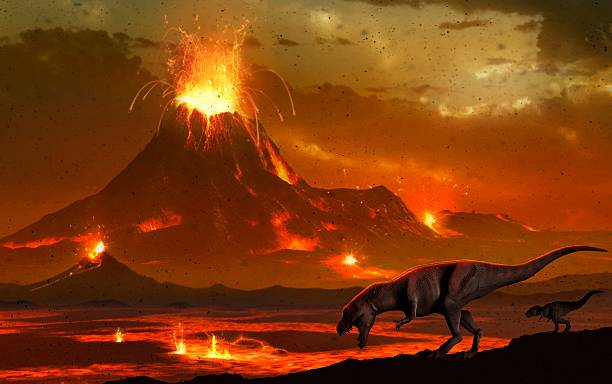
The secret world of Australia’s ancient volcanoes is often now hidden by their remnants which look like regular hills. These now extinct volcanoes are part of an epic fiery upheaval that have occurred over the past 80 million years.
Even though there are hundreds of extinct volcanoes scattered across Australia, it is the only continent without any current volcanic activity. But are they dormant? Experts say that a visit to any extinct volcano need not be of a concern as they no longer have a lava stream so will not erupt again hence the name. Even though Australia is home to nearly 150 volcanoes none of them have erupted for about 4,000 to 5,000 years. Yet some volcanologists do not agree on when some of them with next erupt and Australia is under prepared for potential disaster.
Extinct volcano sites are a fascinating combination of geology and mystical landscapes. Visiting these intriguing wonders is impressive even though they are dwarfs compared to the giants they were before in Australia’s volcanic past!
1. Mount Gambier – last eruption 5,000 years ago, so will it erupt again?

Australia is the home to the world’s longest chain of continental volcanoes ranging for more than 2,000km along the east coast, it is south-east Australia that features the country’s only active volcanoes. Stretching from Melbourne to Mount Gambier are 400 volcanoes, is the main region of volcanic region of volcanic activity in Australia. Even so the last eruption was 5,000 years ago and with the estimated eruption frequency of once every 10,000 years the chance of activity anytime soon is not high. Yet there is much speculation that this ancient volcano could come alive again at any time!

Mount Gambier had at least 14 different vents from which the eruption 5,000 years ago occurred. The Blue Lake and Valley Lakes craters were formed during the eruption.
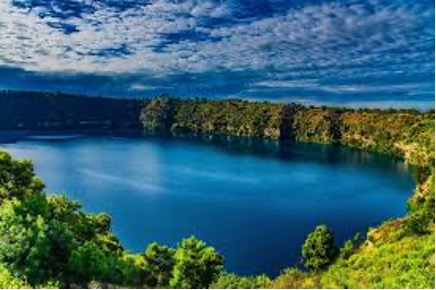
Nearby there are several viewing platforms around the rim of the Blue Lake to experience the stunning views which are even more spectacular on winter mornings when the mist lingers as the sun rises.
Deep below the volcanic earth lie Mount Gambier’s Lava caves. There are about 800 caves in the in the region with a group of the safest and most accessible ones being available to look around. The maze of water-filled passages and secret tunnels of Engelbrecht Cave is a nearby feature for experienced divers to explore.
2. The Glasshouse Mountains- a natural playground of walks and epic lookouts
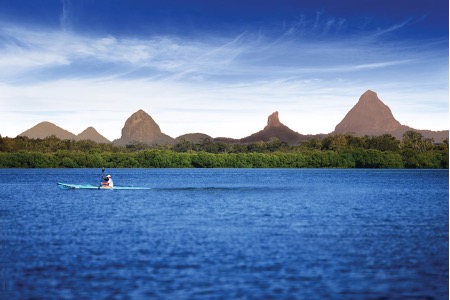
Glass House Mountains are hard to miss! They stand out from the landscape as a cluster of thirteen hills towering from the coastal plain of the sunshine coast of Queensland.
These ancient volcanic remnants are what is left from eruptions that occurred around 25 million years ago. They were named in 1770 when Lieutenant James Cook saw them as he was on his epic journey along the Australia’s east coast. The shape of them reminded him of the shape of the glass furnaces in the glass making foundries back in Yorkshire England.
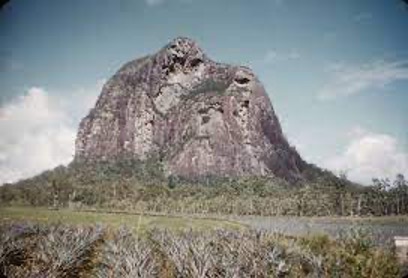
The most striking is Mount Tibrogargan which from certain viewpoints resemble a face staring east towards the ocean. More ancient rocky outcrops formed by the volcanic activity millions of years ago can be appreciated along the Mount Ngungun walking track offering fantastic views of Mount Tibrogargan, Mount Coonowrin and Mount Beerwah, which is the highest being 556 metres above sea level.
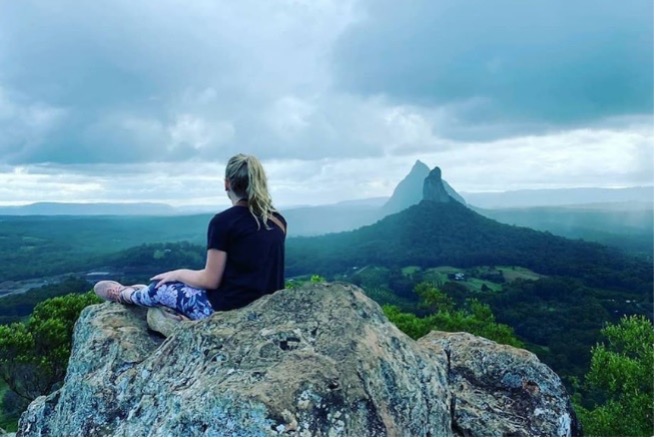
3. Organ Pipes National Park- How weird is nature!
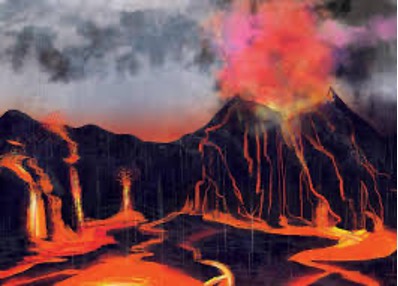
Just 20 km north of Melbourne the Organ Pipes National Park sits on top of one of the world’s largest ancient volcanic lava flows, which stretches 350km! The 121-hectare park is named after its top attraction, the 2.5-million-year-old basalt columns that look like organ pipes.

To reach the Organ Pipes, you park your car on top of an ancient volcano then take the walk into river valley. Formed by a unique cooling and cracking of volcanic lava, the organ pipes just look like the name suggests, towering above the river below. These 20m high hexagonal basaltic columns are up to 1m in diameter. Some of the smaller pipes are tilted and some are almost horizontal. It is thought that the lava that formed the pipes has come from the low volcanic hills about 1 million years ago. The volcanoes which the lava came from are thought to be extinct, but some say they may only be dormant!
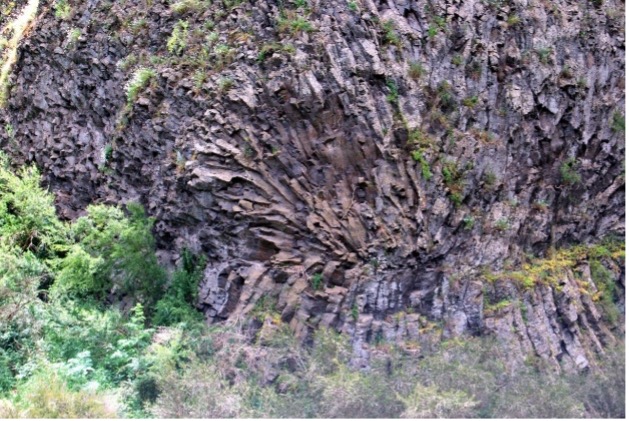
Down the hill, 400m past the Organ Pipes you can also see Rosette Rock, a radial array of basalt columns like the spokes of a giant wheel.
Another feature is the Tessellated Pavement which is a mosaic-like basalt outcrop where you can also see fossils that are over 4 million years old.
4. Sawn Rocks Narrabri –like stepping inside a church.
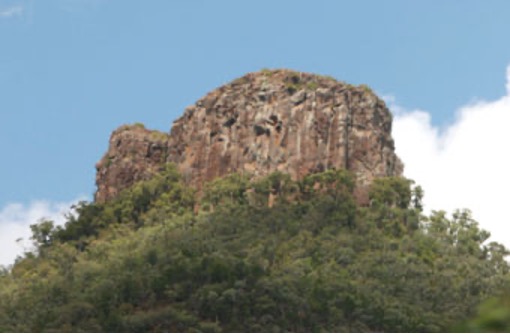
Sawn Rocks is an iconic reminder of Mount Kaputar’s volcanic past. These rocks are the remains of a basalt lava flow from the ancient Nandewar volcano.This volcano, now extinct, dominated the area 21 million years ago. Today the Nandewar volcano is hardly recognisable due to millions of years of wind, rain, and ice eroding. This erosion has sculptured a large volcanic dome. The dramatic landscape is now maintained as Mt Kaputar National Park.
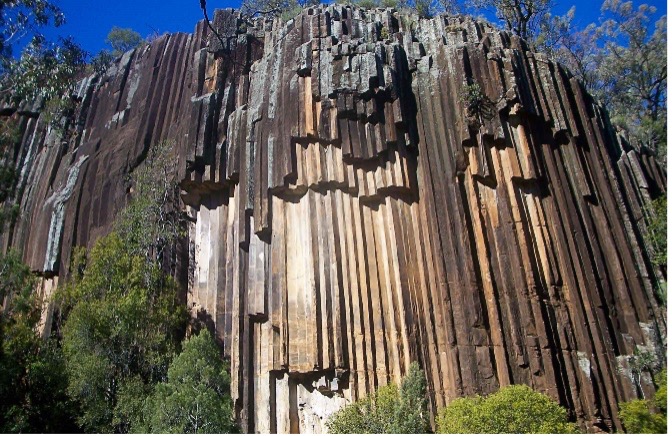
Sawn Rocks is a 40m basalt cliff face featuring perpendicular/octagonal shaped rocks which resemble a giant series of organ pipes. Yet another example of the result of even cooling of molten rock enabling crystals within the rock to align perfectly with each other. It is exceptionally rare to find them so perfectly formed and preserved and Sawn Rocks is recognised as being one of the best examples of columnar jointing in Australia.
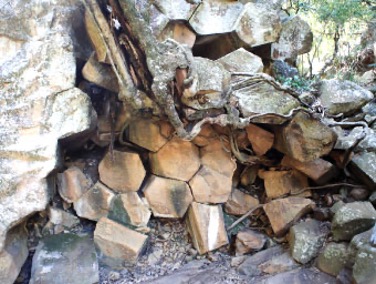
Over thousands of years, huge slabs of rock have fallen to the bed of Bobiwaa Creek below, resembling the collapsed pillars of an ancient roman temple.

Two volcanoes pushed Mount Kaputar high above the plains. After a series of volcanic eruptions, then the millions of years of erosion narrow valleys and steep ridges have been carved into this ancient footprint. Rising majestically from the surrounding flat agricultural plains are the Nandewar Ranges you see today. Mount Kaputar is the highest peak in NSW outside the Great Dividing Range.
5. Undara lava tubes Queensland- catch the tube!
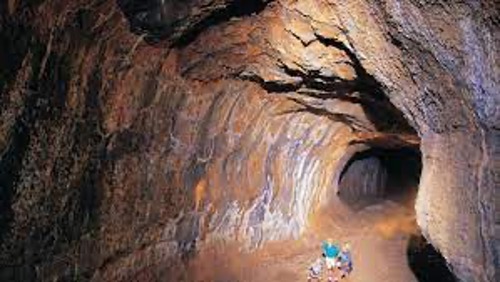
The Undara lava tube system is Australia’s longest and largest lava tubes in the world. The Undara lava tubes, located in Undara Volcanic National Park in North Queensland, have led to the formation of some strikingly dramatic underground caves.
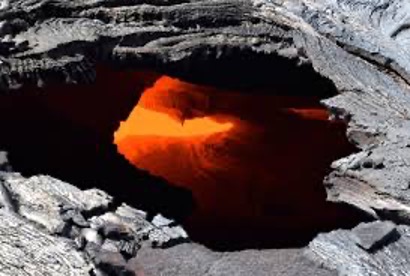
For millions of years Undara was an active shield volcano. The Undara lava tubes were thought to be formed by immense volcanic activity which occurred 190 thousand years ago. During this fiery episode, 23 billion cubic litres of lava was estimated to have poured out from the Undara Volcano onto the surrounding Atherton Tableland. This massive eruption and lava flowed more than 90km to the north and over 160km to the north-west, an amount that could fill Sydney Harbour in six days!
The resulting lava tubes formed huge tunnels and caves, as the rivers of lava confined to a valley crusted over and formed a roof. Insulated in the trap of solidified lava, the lava then continued to flow and move on for tens of kilometres before draining out and leaving an empty tube of lava. Weaker sections of the roof of the tubes collapsed as time went by to form caves. More than 70 Caves have been found in the park, one to note is the spectacular Bayliss Cave, which is approximately 1.3km long, 11m high and 20m wide. It is described as a “bad air cave”, as its carbon dioxide levels have been recorded to hit 5.9%.
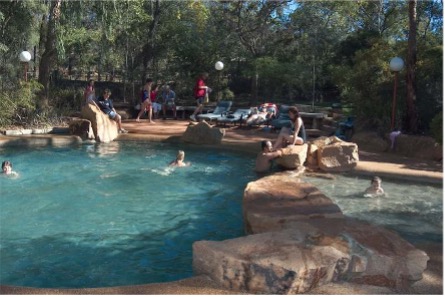
Other examples of well-preserved volcanic features in the park include perennial springs, craters, lava ponds and flows.
6. Tower Hill Game Reserve –An enchanting and secret gem
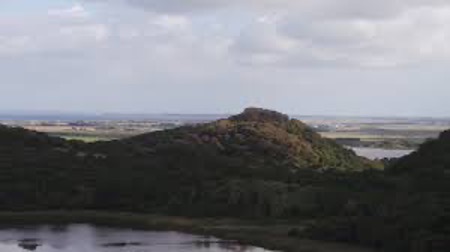
The astounding ancient Tower Hill volcano erupted violently around 30,000 years ago. The initial eruptions created the outer rim of the volcano with then smaller eruptions which formed the internal hills that we see today. Tower Hill is roughly 4km and 80m high. The volcano is one of many to be found along the Great Ocean Road in Victoria.
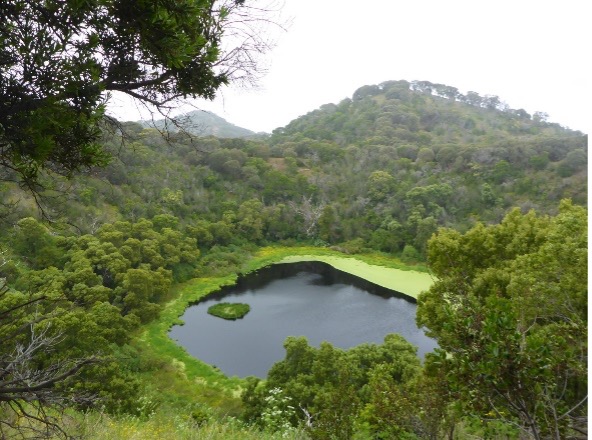
The Tower Hill Reserve is nestled inside the funnel shaped crater that formed below the rim. This wildlife reserve is a haven for populations of native birds and wildlife. Koalas, emus, kangaroos, wallabies, sugar gliders, blue wrens, and many species of waterbirds including black swans all roaming freely throughout the reserve.
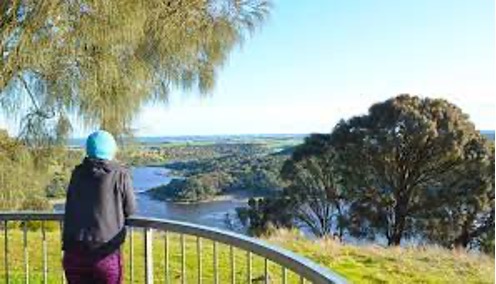
Surrounding Tower Hill are many lookouts to gain good vantage points. The Visitor Centre has a wide range of artefacts that have been discovered in the volcanic ash reminding us of the Indigenous communities that were living at the time of the eruption. The area was also a plentiful source of foods for the Koroitgundidj people whose descendants still have special links with the area.
7. Tweed volcano -what a monster!
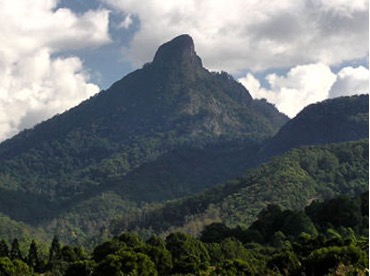
As one of the world’s largest extinct volcanoes, the Tweed Volcano was last active 23 million years ago. Mount Warning being the central volcanic remnant of the Tweed volcano. Over millions of years the erosion has substantial enough to form a large erosion caldera (basin or large depression) around the volcanic plug of Mount Warning.
Together with several other volcanoes, Tweed volcano formed a single towering volcano which stretched across 100km in diameter.
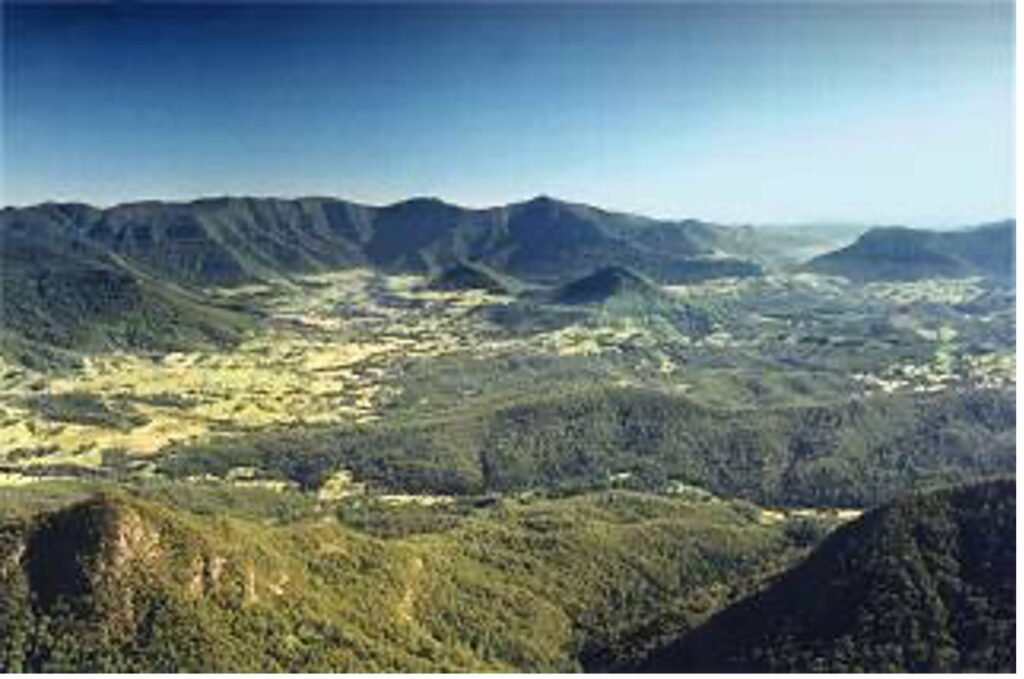
Located in north-eastern NSW, and at 1000m deep with a diameter of 40km, the erosion caldera is the largest in the Southern hemisphere. It is part of an area known as ‘Australia’s Green Cauldron’ which has been announced as a landscape of national significance and a wonderland for volcano experts, geologists, and visitors as one of the world’s great natural wonders.
https://www.bigvolcano.com.au/natural/wollum.htm
8. Cape Hillsborough, Queensland – hotspot beauty
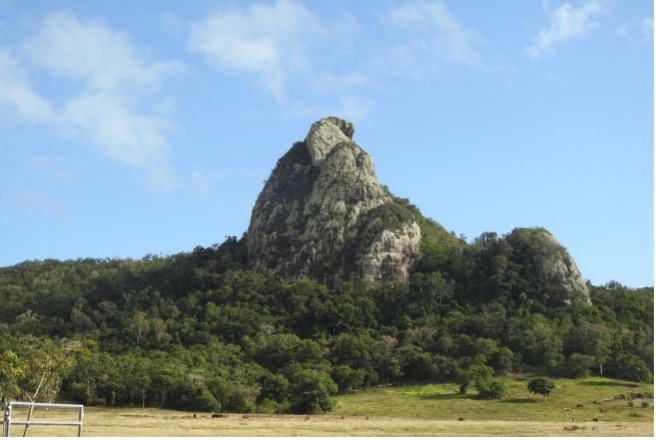
Cape Hillsborough in Queensland is the dramatic remnant of an ancient volcano that exploded around 34 million years ago. It is the most northerly point of the world’s longest chain of continental volcanoes stretching for more than 2,000km along eastern Australia. Known as the Cosgrove hotspot track.
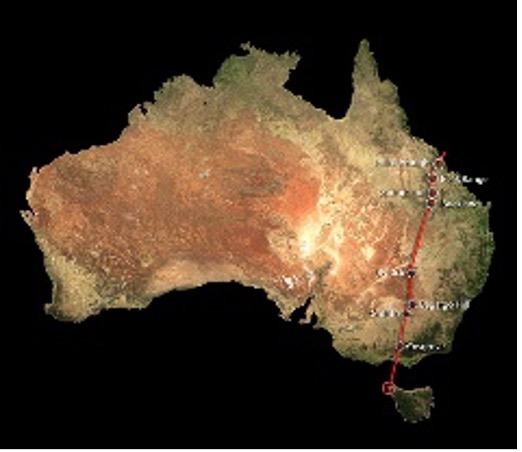
As the youngest volcanic area in Australia, Cape Hillsborough is the first of a line of volcanoes that runs from Cape Hillsborough south-west through central NSW to Cosgrove in Victoria.
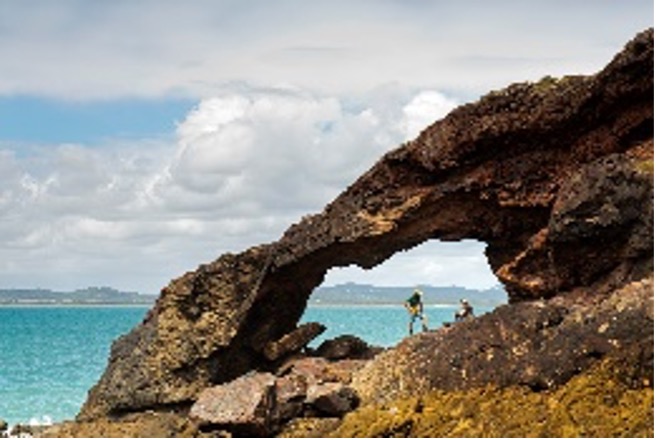
The Dragon’s eye above in Cape Hillsborough National Park is one of the notable rock formations created by erosion. The rocky hills and shores yield to wide sandy beaches where the shimmering of the sand is due to the flakes of mica, yet there is little mica in the rocks at Cape Hillsborough itself.
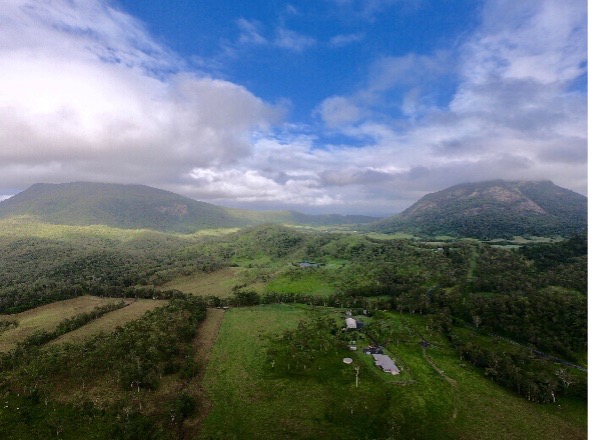
The nearby peaks of Mount Blackwood and Mount Jukes are the same age as the Cape Hillsborough volcano.
9. Mount Canobalas NSW – the volcanic Old Man Canobalas
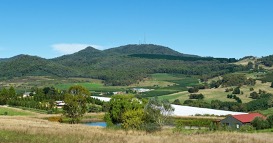
This ancient volcano is the highest peak between the Blue Mountains and the Indian Ocean and stands at 1395m above sea level. It is the highest point between Sydney and Perth. Between 11-13 million years ago Mount Canobolas’s main period of volcanic activity lasted for 2 million years. Protruding up to 0.5km above the surrounding plateau of the Western Central Tablelands, it is a prominent ‘landlocked island’.
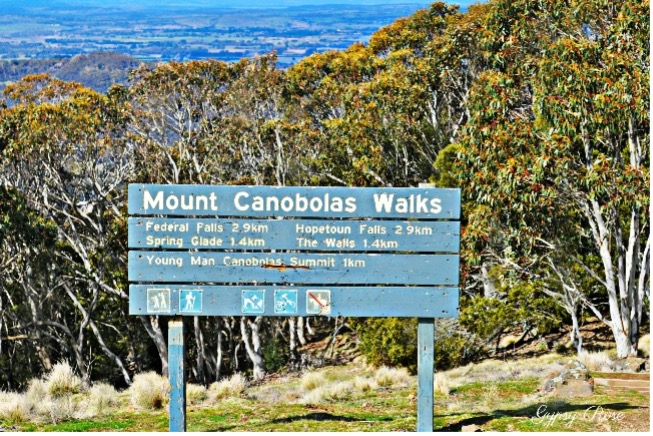
Mount Canobolas is considered as the national example of a Shield volcanism. The word Canobolas is derived from an Aboriginal word meaning ‘two shoulders’. These two featured summits on are Mount Canobalas (also known as Old Man Canobolas) and Young Man Canobolas. These two summits are connected by the summit walking track which traversing a saddle between to two mountains, and are connected by a summit walking track which, traverses a saddle between to two mountains and joining up with some of the other walking tracks along the way.
As one of the region’s most important natural and environmental sites it is now a State Conservation Area and a National Park.
10. The Nut Tasmania – the stump of an ancient volcano
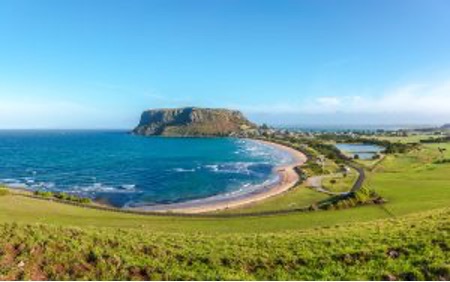
The Nut is all that remains of an ancient volcanic plug in the far north west of Tasmania. The original core was built up by fragments of volcanic rock which was spewed out by explosive eruptions. Molten basaltic lava filled up the feeder pipe and in places intruded into the fragments forming a lava lake in the crater where is solidified.
The Nut is 143m high and rises-up from Bass Straight that towers above the town of Stanley.
